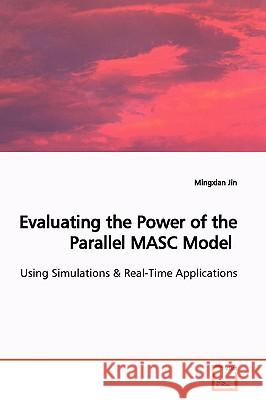Evaluating the Power of the Parallel MASC Model » książka
Evaluating the Power of the Parallel MASC Model
ISBN-13: 9783639147421 / Angielski / Miękka / 2009 / 112 str.
The Multiple Associative Computing (MASC) model is multiple SIMD (Single Instruction stream Multiple Date stream) with an associative style parallel computation model. It offers a complete paradigm for general-purpose parallel computation. This book focuses on evaluating the power of the MASC model to provide a better understanding of associative SIMD computing. It consists of three parts. The first part is to justify the timing assumptions for the basic MASC associative operations, as these operations are used extensively in MASC algorithms. The second part creates simulations between MASC and well-known parallel enhanced mesh models, giving an efficient way for transferring algorithms from enhanced meshes to MASC. The third part involves using the ASC model (i.e. MASC with one instruction stream) to develop a polynomial time solution to the real-time Air Traffic Control problem. This type of real-time problem is currently considered to be unsolvable in polynomial time using a MIMD computer. Since the MIMD model is generally believed to be more powerful than the SIMD model, our research work suggests that this belief needs to be reconsidered.
The Multiple Associative Computing (MASC) model is multiple SIMD (Single Instruction stream Multiple Date stream) with an associative style parallel computation model. It offers a complete paradigm for general-purpose parallel computation. This book focuses on evaluating the power of the MASC model to provide a better understanding of associative SIMD computing. It consists of three parts. The first part is to justify the timing assumptions for the basic MASC associative operations, as these operations are used extensively in MASC algorithms. The second part creates simulations between MASC and well-known parallel enhanced mesh models, giving an efficient way for transferring algorithms from enhanced meshes to MASC. The third part involves using the ASC model (i.e. MASC with one instruction stream) to develop a polynomial time solution to the real-time Air Traffic Control problem. This type of real-time problem is currently considered to be unsolvable in polynomial time using a MIMD computer. Since the MIMD model is generally believed to be more powerful than the SIMD model, our research work suggests that this belief needs to be reconsidered.











